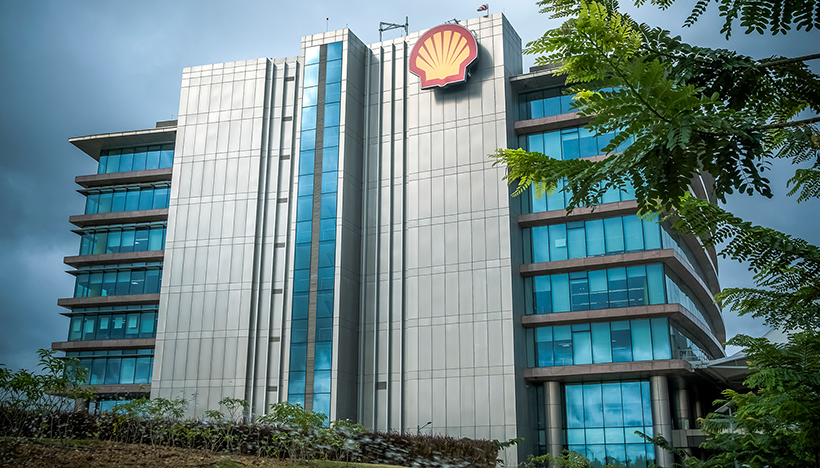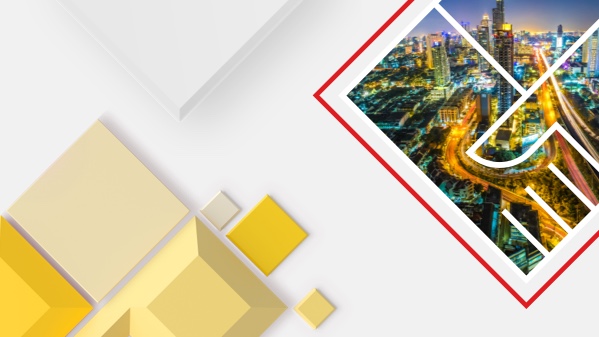Tax incentives
We continue to review our approach to tax incentives, because we believe that greater transparency promotes a better understanding of what tax incentives are designed to achieve. There is no common definition of a tax incentive. Shell defines tax incentives as fiscal measures designed by governments to stimulate investment and encourage growth, or a change of behaviour, by providing more favourable tax treatment to certain activities or sectors. In 2020, we decided to use this definition to assess whether a measure offered by a government is a tax incentive.
We seek to ensure that tax incentives are transparent and consistent with statutory and regulatory frameworks before deciding whether to make use of them. We only make use of incentives where they are aligned with our business and operational objectives and where we have a qualifying business activity.
When we accept tax incentives offered by governments to support investment, employment and economic development, we seek to implement them in the manner intended by the relevant statutory, regulatory or administrative framework. If there is uncertainty, we will seek to engage with the relevant authorities to agree implementation aligned with the intended policy objectives.
Our Shell Tax Escalation Procedure (STEP) provides a mechanism to escalate uncertain tax positions to the Shell Tax Leadership Team. In particular, we will escalate a decision to accept tax incentives that are not specified in law or not generally available to other industry participants. If we accept any such incentives, we will encourage the relevant authorities to make details of these incentives publicly known.
In addition, we will make data available for governments to assess the economic impact of incentives when requested to do so by the relevant authorities. Data requirements vary by country, but might include investments, earnings forecasts or jobs created.
Where appropriate, we make use of incentives which are aligned with the goals of our Powering Progress strategy. Launched in February 2021, this sets out our strategy across our three business pillars: Growth, Transition and Upstream.
Growth pillar
Our Growth pillar comprises our Marketing, and Renewables and Energy Solutions (RES), formerly known as New Energies, businesses. Examples of tax incentives available to our Growth pillar include research and development credits and excise and customs duty rebates for biofuels.
The tax rules in most countries were written before the development of renewable energy technologies. Redesigning tax rules to include incentives that encourage the supply of and demand for renewable energy will play an important part in advancing the energy transition. These measures could help make zero-carbon energy more affordable so that it can compete favourably with fossil fuels. For example, some governments offer incentives for investments that will help to reduce emissions in sectors that are hard to decarbonise, like shipping, aviation and road freight.
Many of the technologies for renewable power generation are in their infancy and require considerable upfront investment in infrastructure. Incentives encourage this investment and may include tax credits for solar projects or allowing accelerated depreciation for offshore wind turbines. For more on how we advocate for sustainable fuels, see our Biofuels case study.
Transition pillar
Our Transition pillar comprises our Integrated Gas, and Chemicals and Products businesses. These labour- and capital-intensive businesses typically require long-term investment in equipment and facilities. Governments may offer incentives to attract investment in such businesses to boost local economies and create jobs.
Case studyState and local tax Incentives for our Pennsylvania Petrochemicals Complex
In Pennsylvania, Shell makes use of two tax incentives designed to encourage companies to create jobs and to encourage capital investment in the state.
In 2012, Pennsylvania introduced the Pennsylvania Resource Manufacturing (PRM) Tax Credit. This is offered to companies that purchase and process ethane and use it as a petrochemical feedstock to manufacture ethylene. This incentive can be applied if a company meets certain criteria, including capital investment of more than $1 billion and employment of at least 2,500 construction workers.
The tax incentive is effective until 2042 to help the state re-establish heavy industry after years of decline.
In 2017, Shell began the main construction phase of an ethylene cracker and polyethylene derivatives unit, the Pennsylvania Petrochemicals Complex, that will qualify for the PRM tax credit. During peak construction, the plant employed up to 8,000 construction workers. Once it is operational as planned in 2022, it is expected to employ 600 staff and contractors.
Shell also benefits from Pennsylvania’s Keystone Opportunity Zone (KOZ) tax incentives. KOZ tax incentives encourage investment in areas under economic distress by providing sales and use tax exemptions, income tax credits and property tax incentives to companies that make certain minimum investments. Shell has met the minimum investment of $1 billion and 400 full-time employees and contractors in the zone.

Case studyCanada’s Kitimat community and Shell benefit from tax programme
The LNG Canada joint venture (Shell interest 40%) is building a major liquefied natural gas (LNG) processing facility in the district of Kitimat, British Columbia. Construction of the facility will create 7,500 direct jobs.
Since 2014, the LNG Canada team has worked closely with local communities, First Nations and governments to better understand how the project could help achieve their economic, environmental and community aspirations.
To attract this investment in a large-scale industrial project that would create employment and benefit local businesses, the district of Kitimat established a tax exemption programme for the LNG Canada project. The exemption provides cost certainty through flat amounts for property taxes during construction and the first five years of operations. It is effective from 2019 to 2028.
LNG Canada will contribute fixed property taxes of C$1.6 million in year one, C$3.2 million in year two, C$4.8 million in year three, C$6.5 million in year four, and C$8 million in year five. LNG Canada will then contribute C$9.7 million annually for a period of five years once the plant commences operations, with an annual inflation increase for British Columbia. The development is currently in year three.

Upstream pillar
Oil and gas exploration and production projects are long term in nature, requiring significant upfront capital investment before cash is generated. Despite advances in technology, exploration risks remain high.
Governments use different fiscal tools to offer a competitive upstream tax regime to investors to balance the investment risk and reward, which fluctuate over the main stages of an upstream project: exploration and development, production and decommissioning.
Upstream tax regimes usually include favourable tax relief for capital expenditure, such as investment allowances, and the ability to claim the tax benefit of asset depreciation at an accelerated rate. At the end of a project’s life, decommissioning costs may, in some cases, be offset against the profits of earlier years. However, upstream tax regimes often apply higher tax rates when oil and gas fields are producing. See the Decommissioning case study.
In Norway, we made use of temporary tax incentives for the petroleum industry in 2020. These measures were a government response to declining energy prices and economic uncertainty, both of which may have impacted planned upstream investment. Read more in the COVID-19 section and Norway case study.
Case study: Incentives for investment in economic development in India
Case studyIncentives for investment in economic development in India
Developing ports and the manufacturing industry
India has a coastline of about 7,500 kilometres with 12 major ports and 187 minor ports. About 90% of the country’s trade by volume and 70% by value [A] is shipped, highlighting the importance of ports to the Indian economy. At the same time, India’s manufacturing industry is growing, with an increasing number of multinational companies basing their operations in the country. The Indian government is seeking to develop the country’s port infrastructure to facilitate growing imports and exports.
The government allows 100% foreign direct investment (FDI) in port development projects and offers companies investing in port infrastructure a 10-year exemption from corporate income tax.
Shell Gas B.V. has two subsidiaries in Gujarat. Hazira Port Private Limited (HPPL) is active in developing, operating and maintaining the Gujarat port. Shell Energy India Private Limited uses the port for importing liquefied natural gas (LNG). HPPL began claiming the 10-year corporate income tax exemption in 2015.
[A] Source: Indian Ministry of Shipping.

Special Economic Zones
In April 2000, India announced a Special Economic Zones (SEZs) policy to provide a stable fiscal regime which would be attractive to foreign investors. The SEZ policy aims to boost economic activity in certain regions and create jobs. The incentives and other measures offered to investors in the SEZs include:
- Duty-free import and domestic procurement of goods for development, operation and maintenance of SEZ units.
- Corporate income tax exemption on export revenues for companies in the SEZ of 100% for the first five years, 50% for the next five years and 50% tax exemption for the following five years on export profit which is reinvested.
- Exemption from indirect taxes on supplies to SEZs.
Most of the companies providing IT services in India are located in a SEZ because they are predominantly involved in the export of services. Shell IT Centre is a global in-house operation located in the Bangalore SEZ and is eligible for the incentives offered. Shell started to make use of these incentives in 2016 and received an exemption of 100% in 2020.

Tax benefits on Service Exports from India Scheme (SEIS) and GST
The service sector is a significant contributor to the Indian economy and plays a role in generating employment. The Indian government offers incentives to companies that provide international services to help them keep costs down. This is designed to attract service businesses to India and make India’s service sector more globally competitive.
Incentives include the Service Exports from India Scheme (SEIS) which promotes the export of services from India by providing a credit for some exports which can be used to offset certain tax liabilities. The government has also established a refund mechanism for Goods and Services Tax (GST) paid by exporters of services. Ensuring a smooth refund process helps keep prices in India’s export industry internationally competitive.
Shell’s Projects & Technology (P&T) and Shell Business Operations (SBO) make use of the SEIS and GST refund incentives.








